Back story: Assistance from the Kingdom of Saint Siegfried:
Year 202X, tension between countries who had a claim on the territories located on the South China Sea finally broke out into an all out war. Just before the war, the Philippine Air Force's (PAF) first Fighter Program was launched, and resulted to the construction of the FS-6A, which took only a short amount of time from concept to production, to be in time for when the war breaks out. The FS-6A, which was funded and built by "a mysterious organization", was quite effective against the fighters of opposing countries. But, as the war dragged on, the flaws that were undetected due to the rushed development of the FS-6A started showing up; Despite being extremely stable, the planes went out of control due to a bug on the control system which destabilizes the plane when thrust vectoring is used at speeds above 300mph. this voided the planes of the advantage they had at the beginning of the war. along with this destabilization issue, the plane was found out to be very weak against high G forces wich caused several FS-6A's to explode upon destabilization. Everyday, more and more of the PAF's FS-6A's were being shot down until none remained. With the Philippine Naval Force starting to lose out as well, the country has almost lost all hope, but never gave up for the sake of the home land.
The PAF seeked the help of the "mysterious organization" behind the FS-6A, revealed to be Altair Aviation, a primarily civillian company, for funding to purchase aircraft from neutral nations to use in the war. The founder of Altair Aviation, feeling responsible for the country's predicament, agreed to purchase the planes and give it to the government as compensation for the failure of the FS-6A. Aircraft manufacturers from different nations were contacted around the world, but only one responded;
The Kingdom of Saint Siegfried.
A deal was made, the aircraft, F/A 34 Eclipses, were quickly delivered, and The Philippines was able to defend itself from occupation by the opposing countries, allowing it to keep its independence.
3 Years after the end of the war, the Philippines has almost fully recovered, and Altair Aviation, still living with the guilt for the failure of the FS-6A, has denied all military aircraft contracts, never producing a single military plane since the FS-6A, focusing instead on its primary intention of developing civillian aircraft and technologies.
One Day, a Letter from the Kingdom of Saint Siegfried was set down onto the table of the Philippine President, asking Local Aircraft Manufacturers for proposals to a replacement for their Aging fleet of F/A 34 Eclipses, which they cannot replace on their own due to development difficulties. The President, seeing this as an opportunity to thank the Kingdom for their cooperation and quick delivery of the Eclipses during the war, decides to contact Altair Aviation, hoping that the company agrees to develop a plane for the Kingdom. With the owner of Altair Aviation sharing the same view as the President, development of a proposal plane was started.
The New Prototype, Codenamed YFS-7, had new electronics and control systems developed for it (checked and tested thousands of times to ensure it is bug free), and borrowed the Frame and thrust vectoring Engines of the FS-6A. The wings were forward swept and carefully designed to provide aerodynamic stability in low and high angle of attack (AoA), making sure to never repeat the mistake with FS-6A where the wings were not really designed for a high AoA, and relied on electronic stabilization for high AoA and Vector Thrusting (VT) maneuvers. As development furthered, new and more powerful engines were fitted, the electronics and control systems were refined, the design was changed, and the Plane was finally completed.
The FS-7 reflected what the FS-6A was envisioned to be. Good low and high speed stability and maneuverability, Good Durability, and effective 3D Maneuverability.
As it was designed focusing on low and high speed stability and maneuverability, the plane was very stable up to speeds as low 140mph, allowing for shorter runway requirement due to the lower approach speed and the optional use of limited reverse thrust. The plane also achieved a top speed between 1590-1600 mph at 5000 feet above sea level during testing. Take off speed is at 18 0mph. Its weapons and targeting system was carried over from the FS-6A with a few improvements, allowing for quicker target aquisition. The plane also uses a special RADAR wave absorbent material, also used in the FS-6A, as its skin which allows for a reduced RADAR cross section and detection despite its not so stealthy shape.
Other than Stability, the other key feature of the FS-7 is its 3 axis vector thrusting. Upon activation of the Vector Thrusting, all electronic assists are turned off, putting all the burden of maneuvering the plane to the pilot. The main purpose of the VT system is to confuse the enemy by changing the orientation of the plane very quickly. If Used incorrectly, the Thrust Vectoring system may cause the plane to spin wildly momentarily, therefore, inexperienced pilots are advised to use full stick deflection at 50% power to initiate VT maneuvers, and to center the stick when things start to get out of control. As an extra safety measure, a Gyro can be manually activated by the pilot to save himself and the plane in case a wrongly executed maneuver leads to an irrecoverable spin. But at the hands of an experienced pilot, the VT system can be used not only change orientaion, but also to achieve an even tighter turning radius, very quick change of direction, and for air shows. such maneuverability also alowed the pilot to use the entire airframe as a full body speed brake which can be advantageous when executed properly.
Upon completion of the plane, The Owner of Altair Aviation flew the prototype to the Kingdom of Saint Siegfried in order to personally present it to the King as an option to be considered as the next Fighter that will defend, or atleast take part in defending the Kingdom from foreign invaders for the years to come.
TLDR:
The Plane is super stable. Take-off speed is at 180 mph, Minimum safe speed of 140 mph, and Maximum of 1590-1600 mph as tested. Engines are capable of 30 degrees of pitch, roll, and yaw vector thrusting to allow flips, spins, and cobra maneuvers.
Using the vector thrusting can be done at any speed from minimum to maximum and I recomend to set power to 50% before starting the maneuver . although you can leave it at a higher or lower setting if you want to. Vector thrusting maneuvers should be initiated by using full pitch deflection until the speed is close to or less than 100 mph, then you can adjust the plane's attitude by using moderate movements on the stick. It usally takes the plane a whole loop before the wings stall out to allow you to do crazy maneuvers. if you made a mistake in a maneuver, and start flat spinning, and you dont know what to do, Activate Group 6 to activate the gyro that levels the plane and use the yaw controls to stop the spin (though I must say that trying to stop the spin without using the gyro is quite a fun challenge). Group 7 also activates reverse thrust that could help the plane stop at a shorter distance and back up the plane.
also, a not so noticeable feature of this plane is the active intake ramp inside the planes intakes, which automatically drops down at 500 mph
SCREENSHOTS:
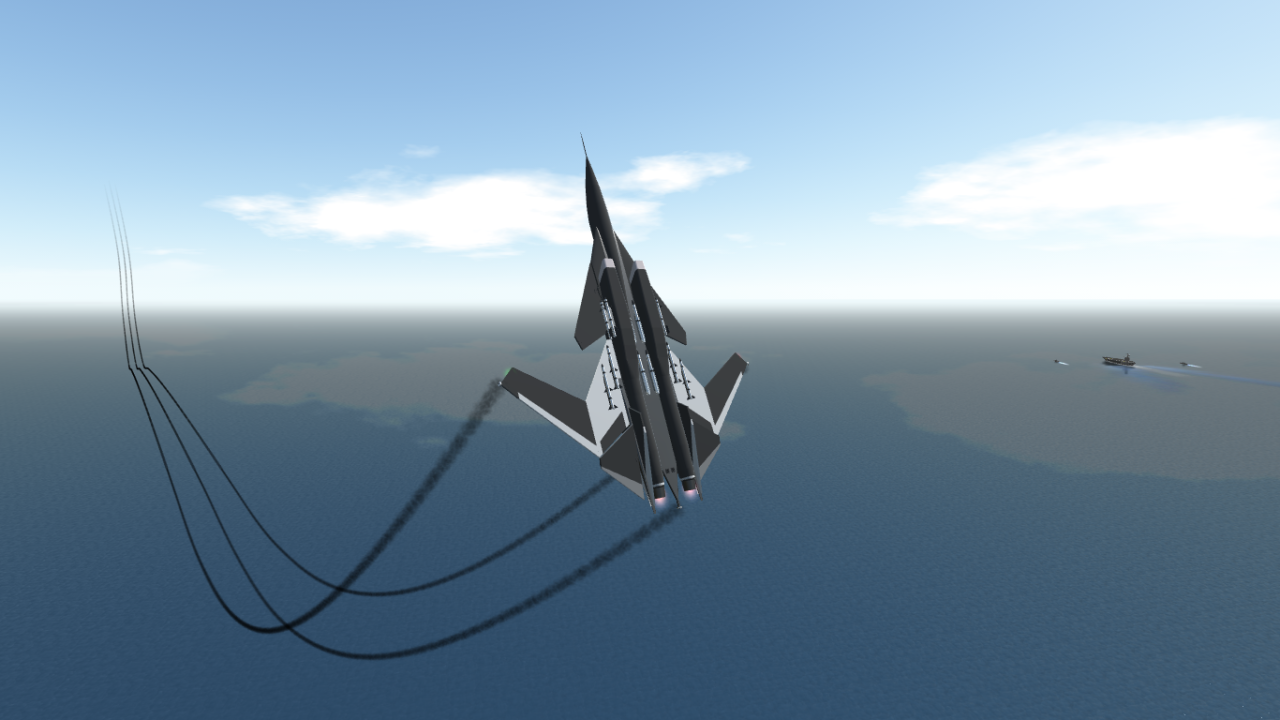
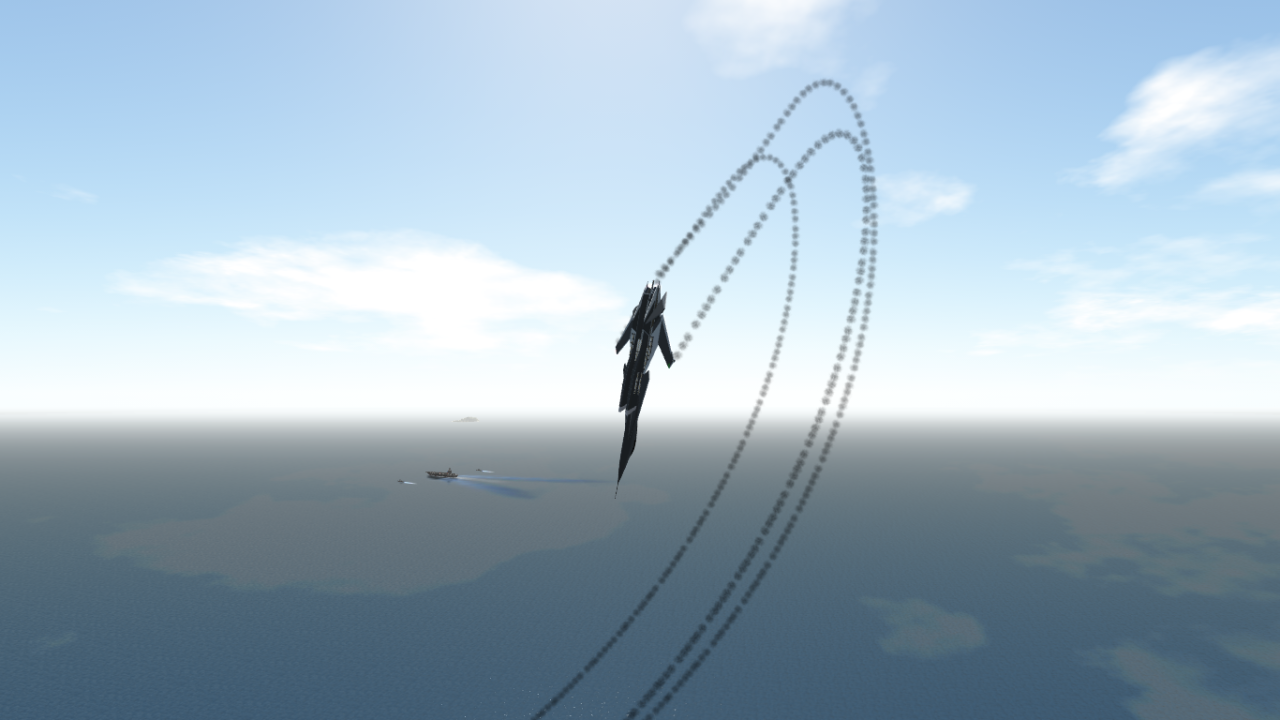

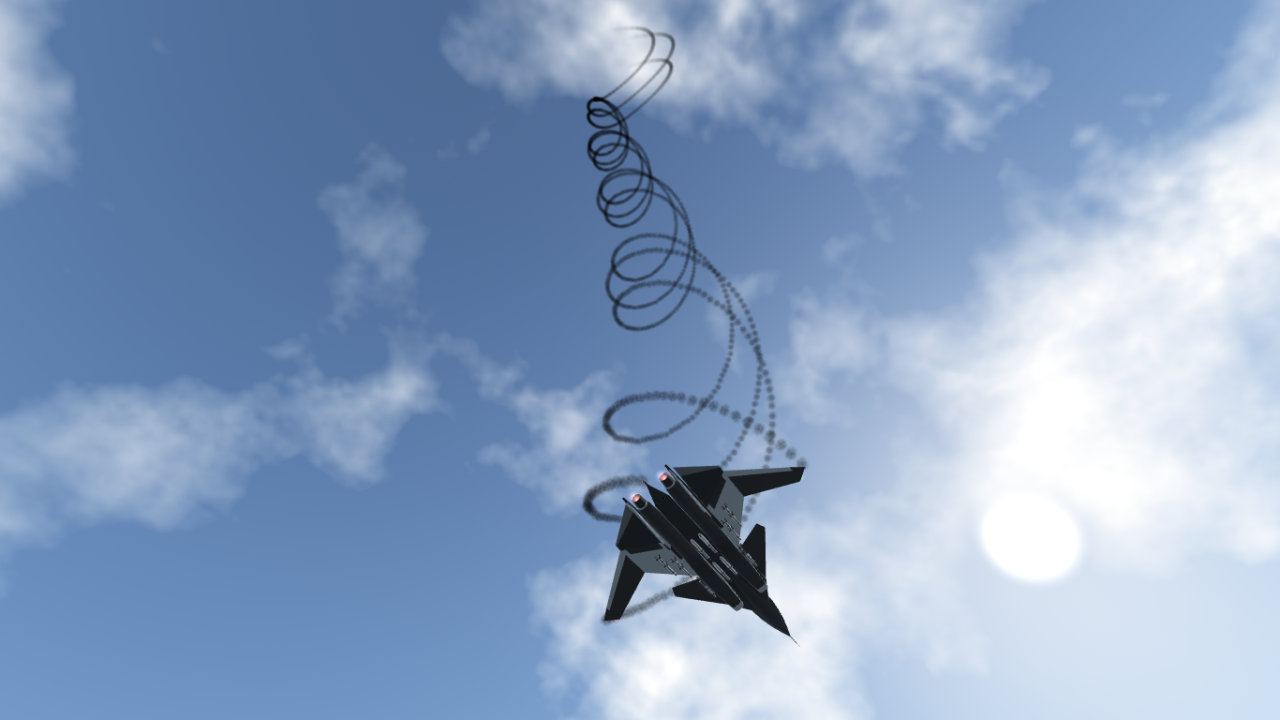
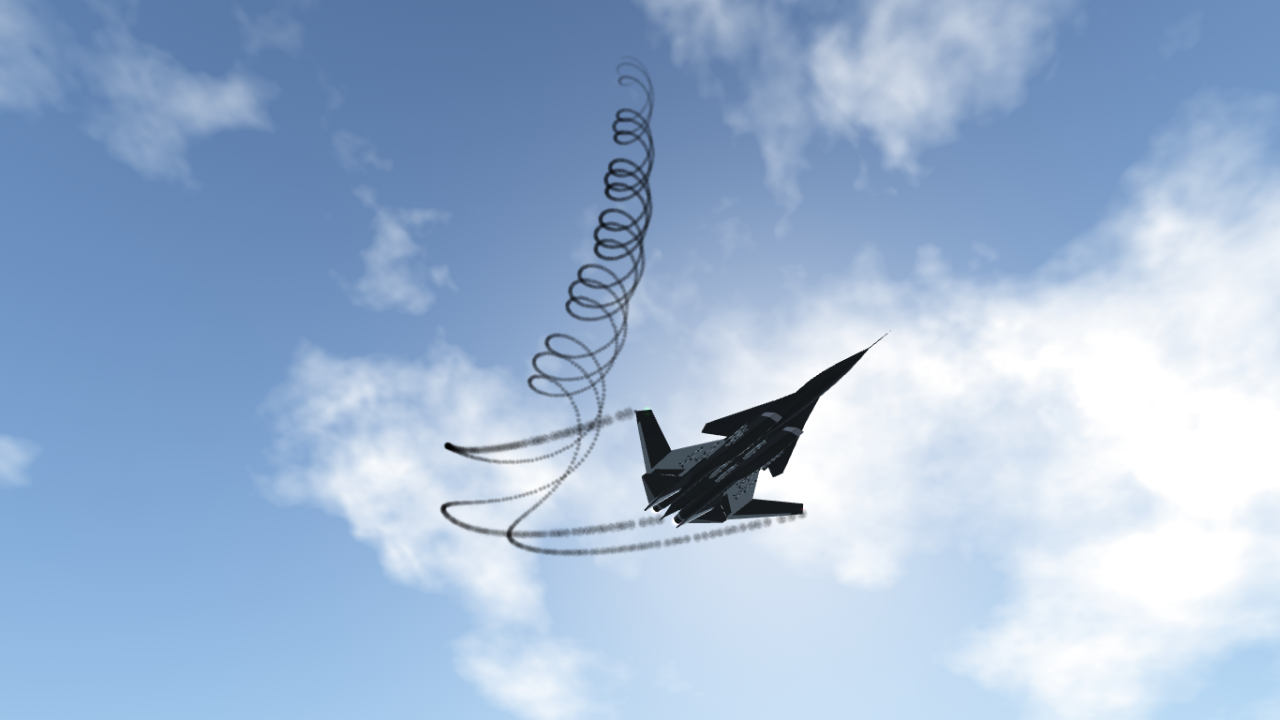
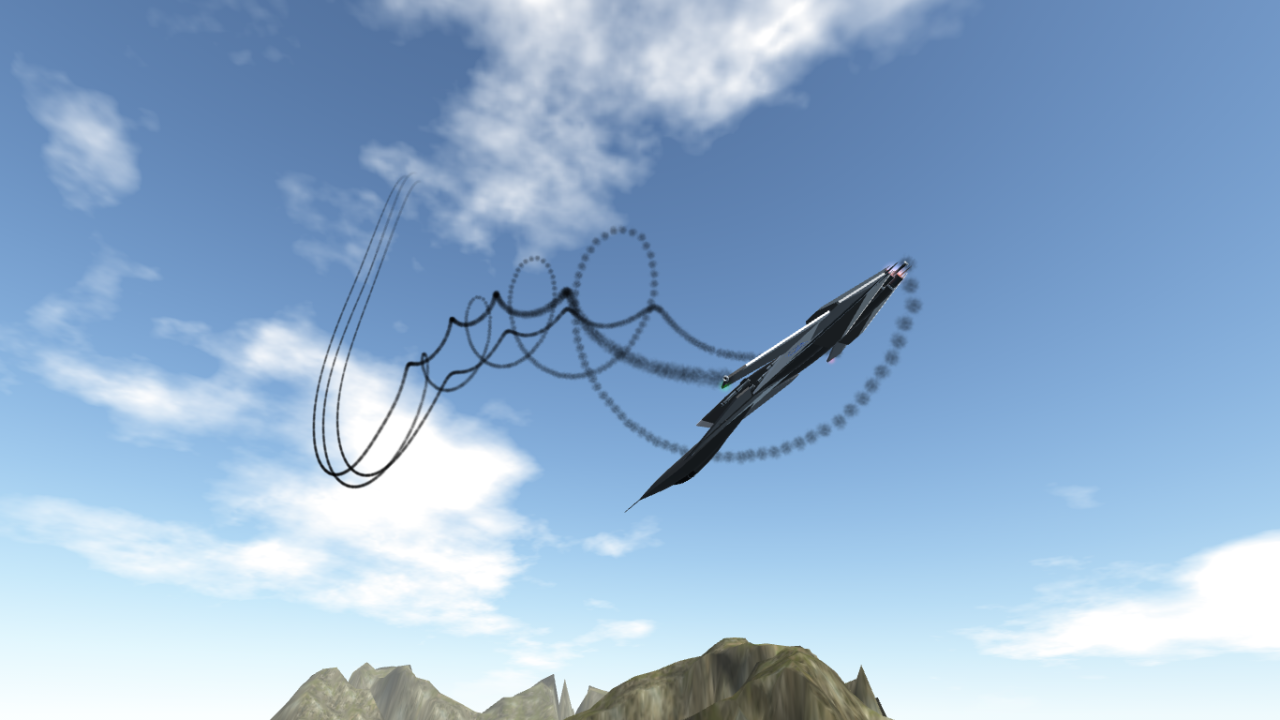
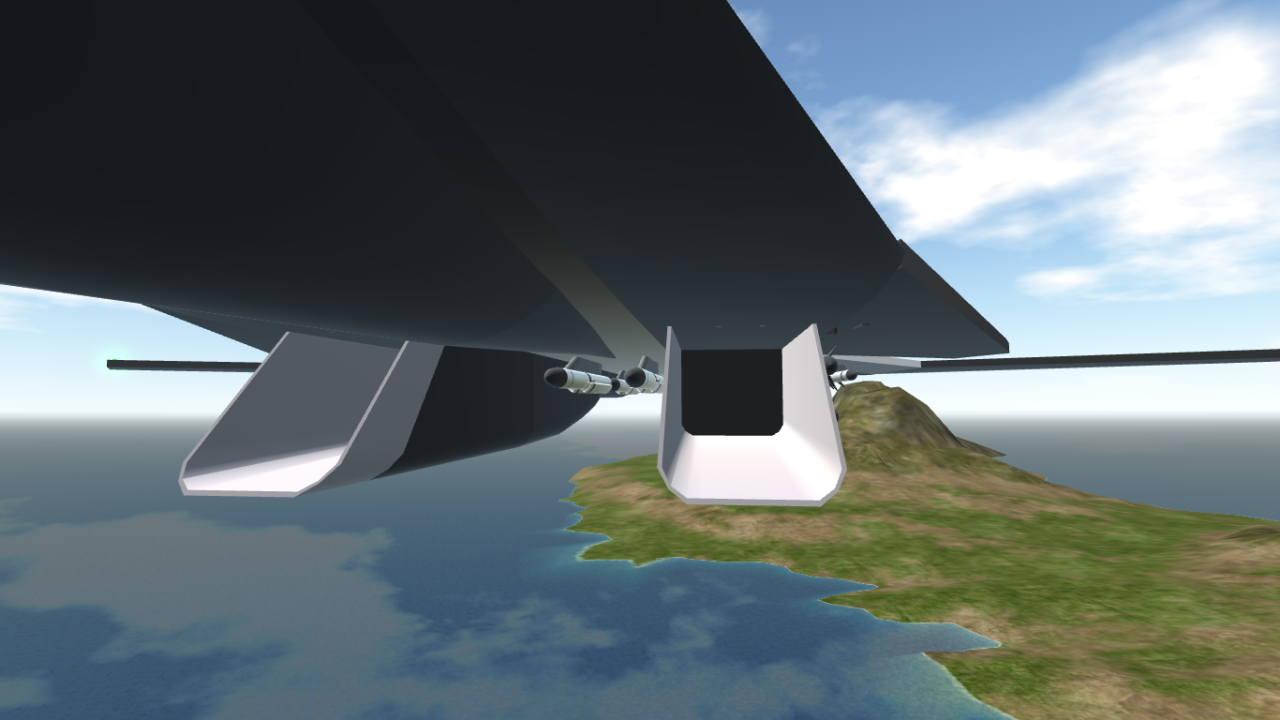
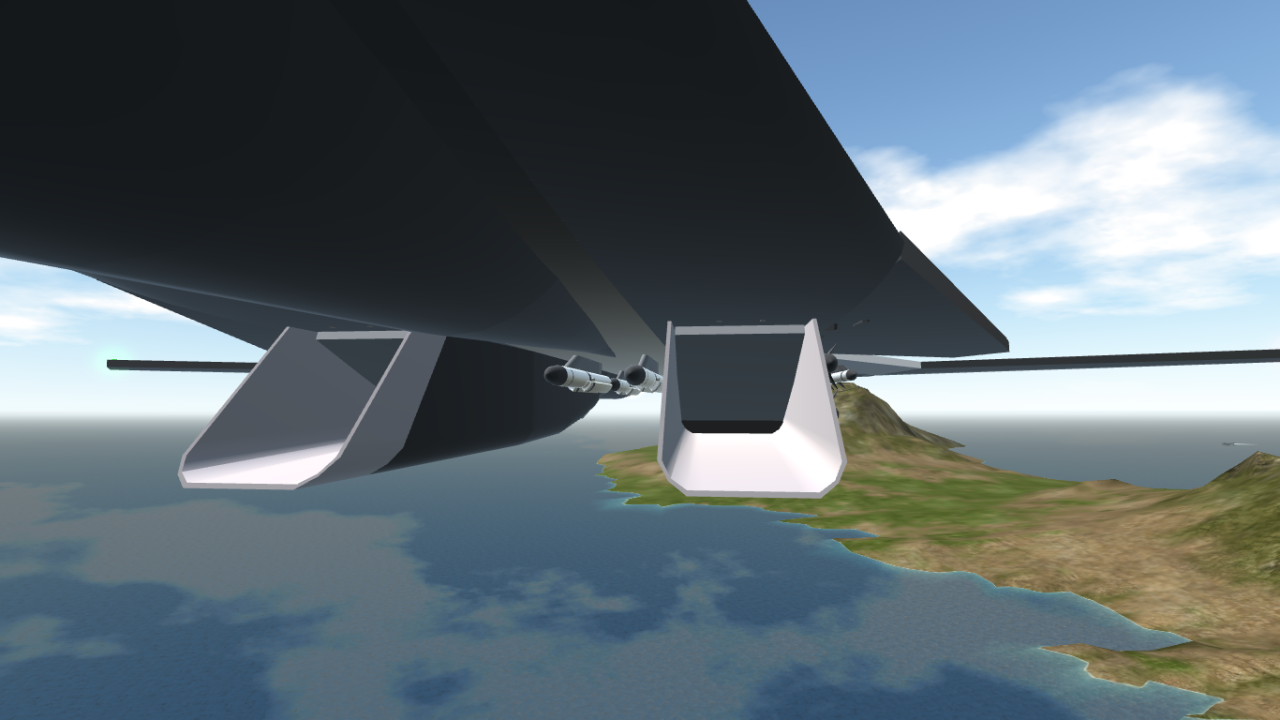
Weapons:
2x Machine Guns
4x Interceptors
4x Guardians
4x Cleavers (reduced size and weight)
Controls:
AG3 - Vector Thrusting
AG6 - safety gyro
AG7 - Reverse Thrust (not so powerful, mainly to allow the plane to reverse)
AG8 - wing lights
If you downloaded this plane, thank you and I hope you enjoy this plane.
happy flying!
Specifications
General Characteristics
- Successors 1 airplane(s)
- Created On Windows
- Wingspan 54.3ft (16.5m)
- Length 72.6ft (22.1m)
- Height 8.3ft (2.5m)
- Empty Weight 20,711lbs (9,394kg)
- Loaded Weight 29,339lbs (13,308kg)
Performance
- Power/Weight Ratio 3.906
- Wing Loading 36.9lbs/ft2 (180.1kg/m2)
- Wing Area 795.2ft2 (73.9m2)
- Drag Points 5721
Parts
- Number of Parts 168
- Control Surfaces 12
- Performance Cost 1,230

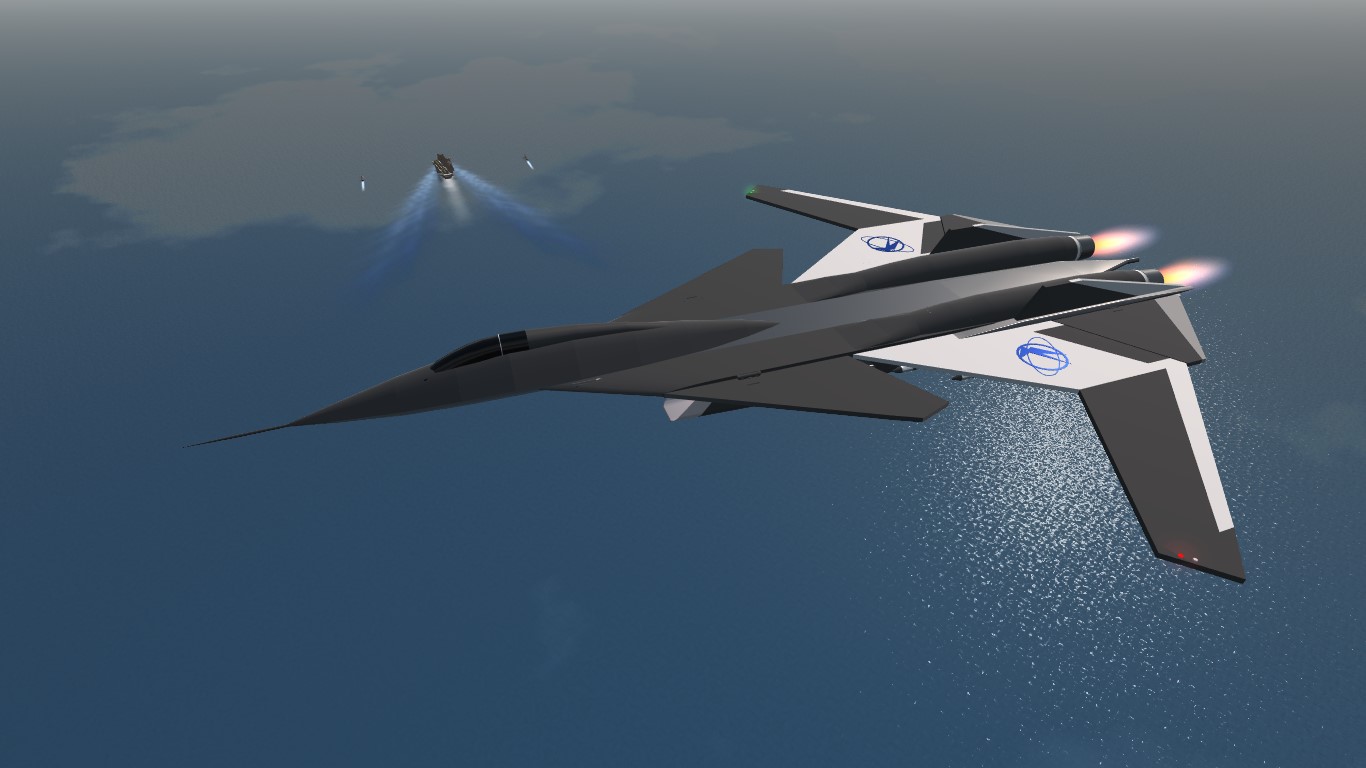
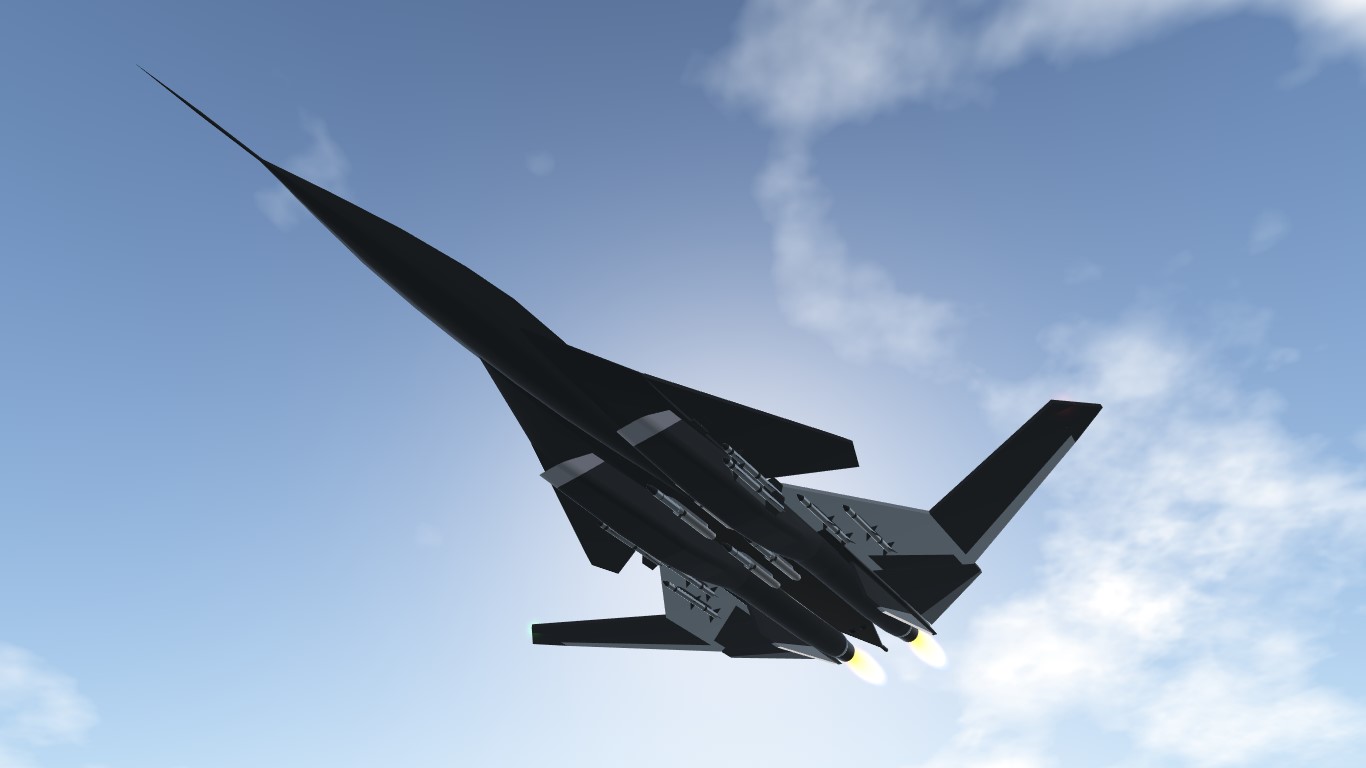
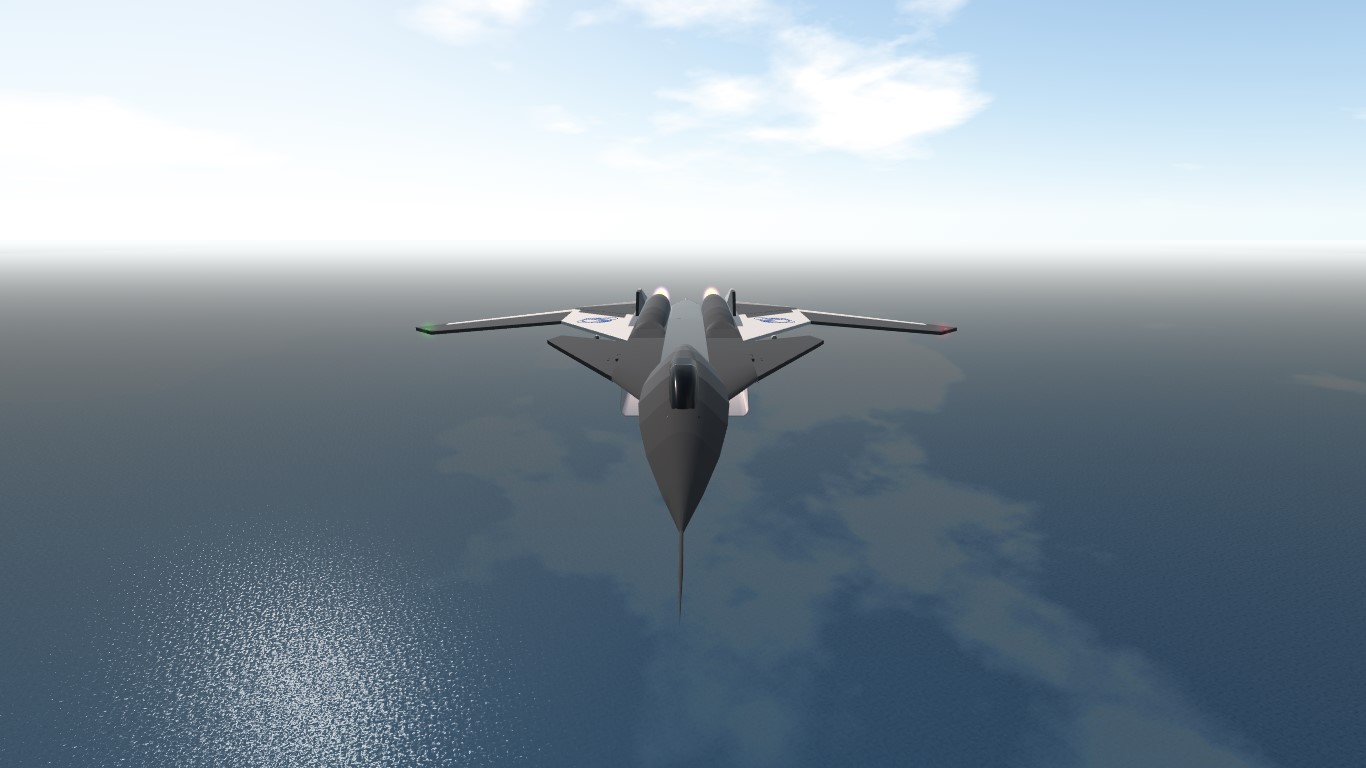
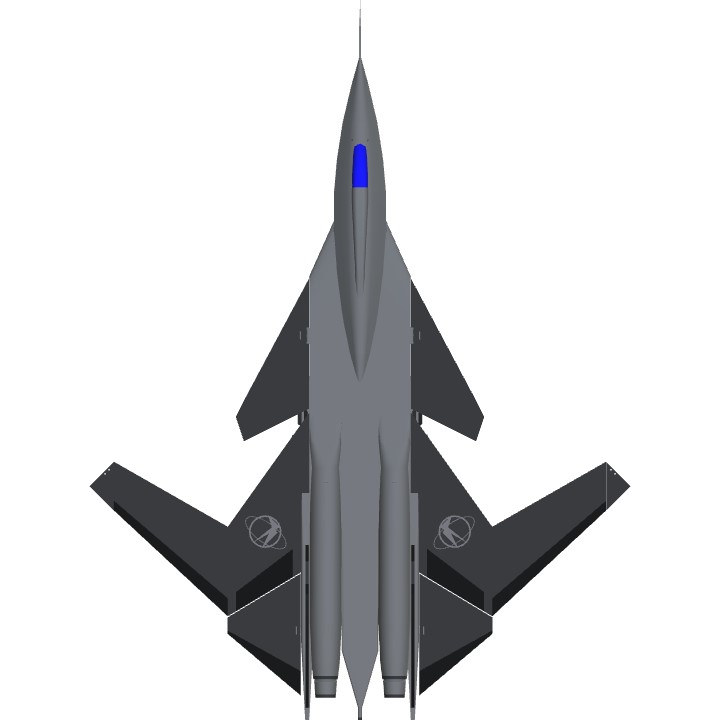
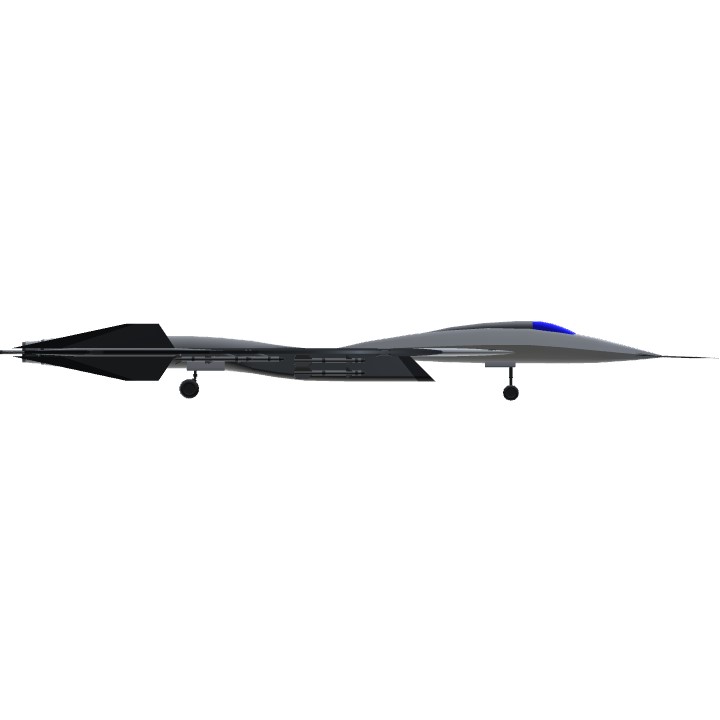
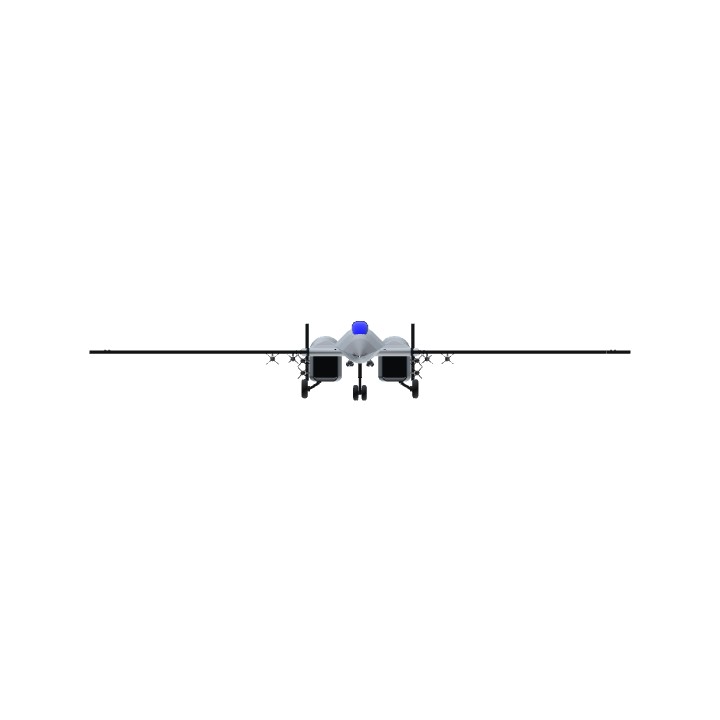
Hmm, looks like the X-02 Wyvern
@FranzPeterSiegfried @Lorileni thanks!
Beautiful plane